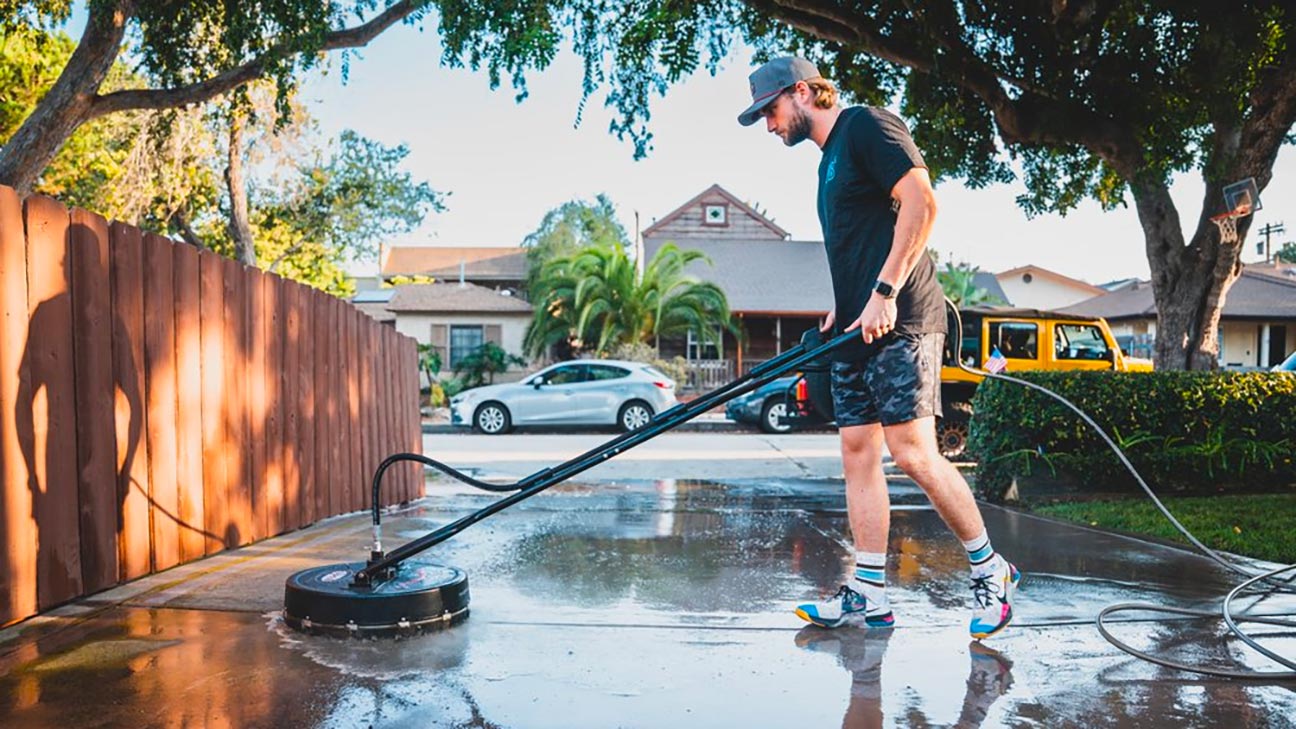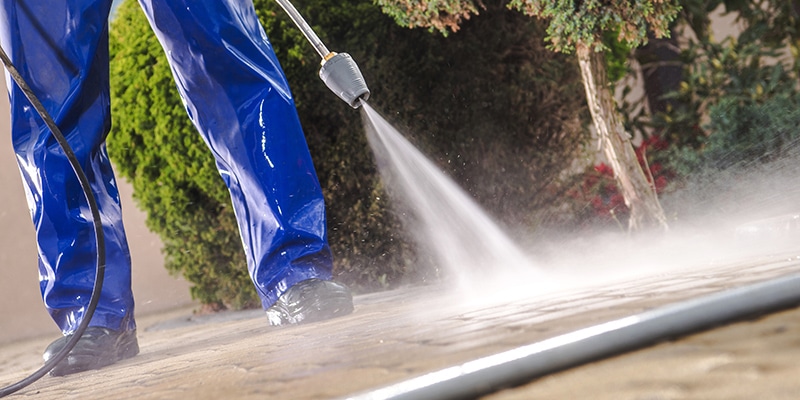Discover Specialist Solutions for Your Home or Company with Pressure Washing Lockhart Teams
Discover Specialist Solutions for Your Home or Company with Pressure Washing Lockhart Teams
Blog Article
Revitalize Your Home: The Ultimate Guide to Pressure Washing
Stress cleaning is an invaluable device for house owners intending to restore the visual charm and long life of their residential properties. Understanding the subtleties of stress ratings, equipment choice, and reliable cleansing techniques can considerably raise the outside of your home. The procedure is not without its difficulties; inappropriate methods can lead to damage rather than restoration. To navigate these complexities and accomplish optimum outcomes, it is vital to check out the essential elements of pressure washing, consisting of useful recommendations on making certain and dealing with common stains safety and security throughout the procedure. What follows may transform your method to home upkeep.
Comprehending Stress Washing
Stress cleaning is an effective cleaning technique that uses high-pressure water spray to remove dirt, grime, mold and mildew, and various other contaminants from numerous surfaces. This method is especially effective on hard surfaces like driveways, sidewalks, decks, and house siding, where typical cleaning techniques may fail. By employing specialized tools that generates high-pressure streams of water, stress cleaning can penetrate deeply right into surfaces, successfully dislodging and cleaning away stubborn particles.
The process is not only efficient but additionally eco-friendly, as it usually counts entirely on water, decreasing the demand for severe chemical cleaners. In addition, pressure washing can improve the aesthetic appeal of buildings, keeping their value and lengthening the life-span of surfaces by preventing deterioration brought on by contaminants.

Picking the Right Devices
Selecting the suitable equipment is critical for achieving optimal outcomes in stress washing. Gas units, on the various other hand, provide higher pressure and circulation rates, making them suitable for larger work such as cleaning driveways or siding.
Next, take into consideration the stress score, determined in pounds per square inch (PSI) For light-duty tasks, a stress washing machine with 1,300 to 1,600 PSI is adequate, while medium-duty tasks usually need 1,600 to 2,500 PSI. Durable jobs may require makers exceeding 2,500 PSI.
In addition, the flow price, determined in gallons per min (GPM), influences cleaning performance (Pressure Washing Lockhart). A greater GPM permits quicker cleaning but might require extra powerful devices
Strategies for Effective Cleaning Up

The technique of overlapping strokes is important for even coverage. Begin from the top and work your way down, guaranteeing that each pass somewhat overlaps the previous one. This avoids streaking and makes sure a comprehensive clean. In addition, preserving a constant range from the surface area, typically 12 to 18 inches, allows for effective application without causing damage.
Using the proper nozzle is additionally essential. A wide-angle nozzle is excellent for bigger locations, while a narrow nozzle can target stubborn dirt or gunk. Utilizing a sweeping movement rather than a fixed spray assists to prevent focused areas of pressure, which might lead to surface area damage.

Taking On Common Stains
When it involves maintaining the look of exterior surface areas, attending to usual discolorations efficiently is essential for prolonging their lifespan and boosting curb charm. Various surface areas, consisting of concrete, wood, and plastic, can gather discolorations from organic products, oils, and toxic wastes, necessitating a targeted technique.
For oil discolorations, a mix of degreasers and pressure washing can produce superb outcomes. Apply the degreaser to the stained location, permitting it to permeate prior to utilizing a stress washing machine to get rid of the residue. Organic spots, such as mildew or algae, commonly call for a remedy consisting of bleach or a committed mold cleaner, adhered to by pressure cleaning to restore the surface area's initial appearance.
Rust stains, normally found on metal surface areas, may demand customized corrosion eliminators. Apply the product and scrub the location prior to pressure cleaning to remove any lingering discoloration. It is necessary to test any cleaning option on a tiny, low-profile location first to prevent damage.
Security Tips and Best Practices
Making certain safety and security while stress washing is extremely important, as the high-pressure water can read the full info here position significant risks otherwise handled correctly. To protect yourself and others, constantly put on appropriate individual safety devices (PPE), including safety goggles, gloves, and sturdy shoes. This equipment will shield you from flying debris and the possibility for injury.
Before beginning, inspect the pressure washing machine for any kind of leakages or damaged components. Familiarize on your own with the equipment's manual to understand its operation and security features. In addition, make sure the location you are operating in is without barriers and that any electric connections are safe from water direct exposure.
When operating the stress washer, keep a secure distance from surface areas and stay clear of intending the nozzle at people, pet dogs, or breakable things. Make use of the appropriate nozzle for the task, as different nozzles produce differing spray patterns and stress degrees. Finally, be mindful of your environments: safe loosened items, watch for electrical lines, and avoid working in damp problems that may lead to slides or drops.
Conclusion
In final thought, pressure cleaning serves as an essential tool for house owners looking for to enhance building visual appeals and longevity. By understanding the ins and outs of equipment option, effective cleaning techniques, and usual stain elimination, the capacity for rejuvenating one's home comes to be obvious.
Pressure washing is an effective cleansing method that makes use of high-pressure water spray to eliminate dirt, gunk, mold and mildew, and other pollutants from numerous surfaces. By using specialized equipment that creates high-pressure streams of water, pressure washing can pass through deeply right into surfaces, properly dislodging and cleaning away stubborn debris.
However, it is crucial to recognize that stress washing requires a certain degree of skill and understanding to avoid harmful surface areas. Softer products like wood or painted surfaces demand a lower stress setting to protect against damages, whereas concrete or brick surfaces can withstand greater pressure Homepage degrees.
Organic spots, such as mildew or algae, typically need a solution having bleach or a look at this site committed mold remover, followed by pressure washing to bring back the surface's original look. - Pressure Washing Lockhart
Report this page